| KEDARNATH DHAM 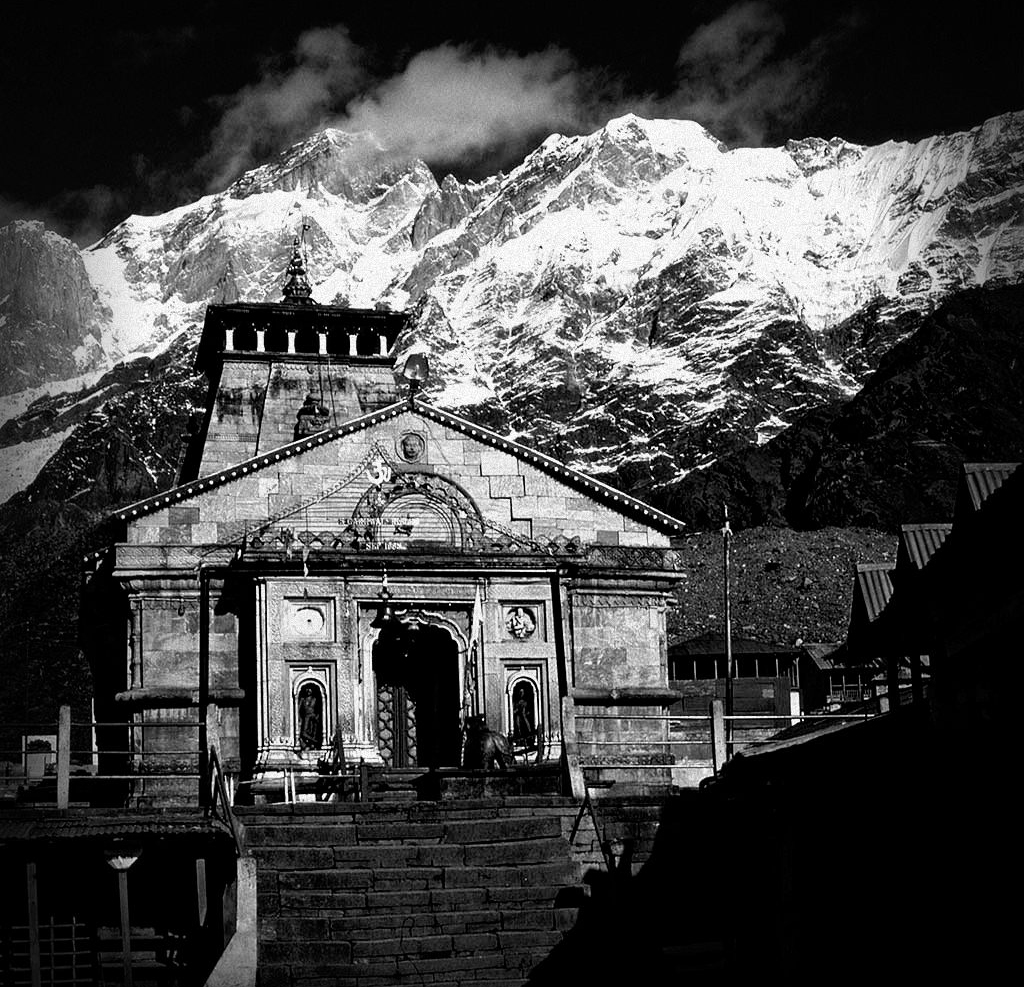
| ||||||||||
|
“And
whenever we do anything with a sense of sacredness and purity, our
entire consciousness starts blossoming. That is why all the twelve
Jyotirlingas were never kept in one place or one state. Some were in the
north, some in the south, some in the west, ---they were distributed
all over.”
Sri Sri Ravishankar Kedarnath Dham or Kedareswar Jyothirlingam is the eighth Jyothirlingam of the Dwadasa Jyothirlingams of Lord Shiva. Kedarnath is a Hindu temple dedicated to Lord Shiva on the Garhwal Himalayan range at an altitude of 3,583 m (11,755 ft), near the Mandakni River in Uttarakhand. Lord Shiva is worshiped as Kedarnath, the 'Lord of Kedar Khand', the historical name of the region. This ancient and magnificent temple is located in the Rudra Himalaya range, also called the Sumeru Parvata or Pancha Parvata. The latter name is given to it because it has five peaks; Rudra Himalaya, Vishnu Puri, Brahma Puri, Udgari Kantha and Swargarohini. It was on the last of these peaks that the four Pandva brothers died, survived by only Yudishthira and his faithful dog. Due to extreme weather conditions, the temple is open only between the Akshaya Tritriya, end of April, to Kartik Purnima, the autumn full moon, usually November. During the winters, the Vigrahas (deities) from Kedarnath temple are brought to Ukhimath and worshiped there for six months. “To which other deity shall we offer our prayers? On account of your prowess, mountains like Himalayas and the oceans with rivers are created and the distant quarters are designated as your mere arms.” Rig Veda 1-121-4 Kedarnath is one of the 275 Paadal Petra Sthalams, expounded in Tevaram. The temple is one of the four major centers in Char Dam pilgrimage of Northern Himalayas. There are five 'Shaiva Tirthas' in Himalayas. First one is Pashupatinath (Nepal), second Jageshwar (Kumaun), and third Kedarnath (Garhwal), fourth Baijnath (Himachal) and fifth Amarnath (Kashmir). “At Kedara, Shiva Himself has been worshipped from time immemorial by the nationals of Bharata in the same manner in which the Pandavas worshipped the Lord.” Shiv Purana , Kotirudra, 18, 19 According to Hindu Epic, during the Mahabharata war, the Pandavas killed their relatives; to absolve themselves of this sin, the Pandavas undertook a pilgrimage. But Lord Vishweshwara was away in Kailash in the Himalayas. On learning this, the Pandavas left Kashi. They reached the Himalayas via Haridwar. They saw Lord Shankar from a distance. But Lord Shankar hid from them. Then Dharmaraj said: “Oh, Lord, You have hidden yourself from our sight because we have sinned. But, we will seek you out somehow. Only after your Darshan, our sins will be washed away. This place, where you have hidden yourself will be known as Guptakashi and become a famous shrine.” From Guptakashi (Rudraprayag), the Pandavas went ahead till they reached Gaurikund in the Himalayan valleys. They wandered there in search of Lord Shankar. While searching for Lord Shiva the Pandavas spotted a bull in a herd which was unique to look at. When the bull was closely followed by the Pandavas, he tried to escape. He went down into the earth, shedding the hump at Kedarnath and other parts of the body at four other places; arms at Tungnath, face at Rudranath, belly at Madmaheswar, and the locks of hair with head at Kalpeshwar. All these five places have now famous Shiva shrines, and are known as Pancha Kedar. In some Puranas it is stated, that after spotting the unique bull, Bhima, one of the Pandavas went after the bull with his mace. The bull was clever and Bhima could not catch him. But Bhima managed to hit the bull with his mace when the bull had its face hidden in a crevice in the earth. Bhima started to pull him by his tail. The bull went down in to the earth leaving his hind part at Kedarnath, and shedding other parts at different places. From the hind part of the bull, Lord Shiva appeared as a glorious Jyothir Lingam before the Pandavas. By having Darshan of Lord Shiva, the Pandavas got rid of their sins. The Lord told the Pandavas that he would remain at Kedanath as a triangular shaped Jyothir Lingam and by having his Darshan devotees would get rid of their sins. When Bhima realized that the bull he hit with his mace was Lord Shiva, he was struck with remorse. He then begged pardon of Lord Shiva and massaged his body with ghee. In memory of this event, even today this Triangular Jyothir Lingam is massaged with ghee as a part of worshipping service along with water and Bilva leaves. The Kedarnath temple was built by Pandavs after Mahabharata war. Pandavas were supposed to have pleased Shiva by doing penance in Kedarnath. It was revived by Adi Shankaracharya during 8th century and is one of the twelve Jyothir Lingas, the holiest Hindu shrines of Shiva. Inside the temple there is an irregular, three-faced linga, representing the hump of Lord Shiva when he took the form of a bull. It is about 3m (9 ft) long, 1m (3 ft) wide, and 1.3m (4 ft) high. Pilgrims are allowed to touch the linga, perform worship, abhishek (bathe), and massage the linga with ghee. In the temple is a Lakshmi-Narayana deity, which was installed by Adi Sankaracharya. The temple faces south, which is a unique feature, as most temples face east. At the entrance of Garbha Griha in the temple, is a statue of Nandi facing Lord Shiva. Just before the Garbha Griha an idol of Kedar Gauri the consort of Lord Shiva is seen facing west while the Jyothir Lingam of Lord Shiva is facing east. In the Mandapa there are images of the Pandavas and their wife Draupadi, Lord Krishna and Kunti, the mother of Pandavas. Outside the temple in the open sky there is a majestic Nandi facing Shiva. Adi Shankaracharya praised Lord Shiva thus: mahadriparshve cha tate ramantam sampujyamanam satatam munIndraih I surasurairyaxa mahoragadhyaih kedaramIsham shivamekamIde II “Oh Lord, who resides in the great heights of Himalayas, Oh Lord, thou, who art worshipped forever by Saints, Hermits, Demons, Gods, Yakshas and Maha Nag (giant snakes), I bow and offer millions of Pranams .” 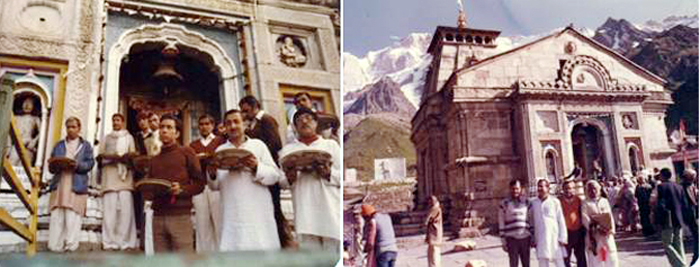
Prayers at Kedarnath by Author
The
whole tract of Kedar is full of shrines and holy places, whose fame and
efficacy is described in the Skanda Purana. Indeed, that precious
collection of marvels has a special section or chapter devoted to this
region. Parvati, the wife of Shiva or Mahadeo, is represented as
conversing with her spouse “a frequent introduction in the Puranas and
inquiring what are the fruits of visiting its sacred places and bathing
in its waters.” Mahadeo answers; “The place that you have spoken of, O
Goddess is peculiarly dear to me. Brahma and the other gods are there;
whoever dies there becomes one with Shiva. If anyone desires salvation,
he shall find it there; though his sins were as great as can be
imagined, the virtue that accrues from a visit to Kedar is sufficient to
cleanse them."
The Samadhi of Adi Sankaracharya is seen behind the main temple, on the banks of the River Mandakini. There is a small temple with Sankaracharya’s Murthi and a Shiva Lingam near the Samadhi. There is a marble staff behind the temple that commemorates the emblem of Adi Sankaracharya. It is believed that Adi Sankaracharya passed away in Kedarnath. Just behind the Kedarnath Temple is the Mahapanth Trail (Gate of Heaven). It is said that from this place there is a path that goes north up to Swarga-rohini (path to heaven). It is also said that the five Pandavas took this path after performing a huge yajna (sacrifice). “Kedara Sambhu, the Lord of everything, is undoubtedly the special presiding deity of this Bharat Khanda and the yielder of all desires.” Shiv Purana One Puranic legend says that Nara and Narayana, two incarnations of Vishnu, performed penance for the welfare of all human beings. (In the concept of Nara Narayana, the human soul Nara is the eternal companion of the Divine Narayana. The Hindu epic Mahabharata identifies Lord Krishna with Narayana and Arjuna - the chief hero of the epic - with Nara). They did the penance in Badrinath for a long time in front of a Shiva Lingam which they made out of earth every day. Lord Shiva pleased with their penance appeared in front of them. Nara and Narayan thanked Lord Shiva and requested him to have a permanent abode as a Jyothir Lingam at Kedarnath so that all people who worship him shall be freed from their miseries. Lord Shiva granted their wish and stayed at Kedarnath as Jyothir Lingam.
Scientists claim that Kedarnath temple was under snow for almost 400 years and say that most of the people are unaware of this fact. According to scientists of Wadia Institute of Himalayan Geology, Dehradun, “Kedarnath temple survived being buried under the snow for almost 400 years and so they are not surprised that the shrine did not suffer much damage during the massive floods in the region.” According to the scientists, “the temple structure has several yellow lines, which were formed as the glacier slowing moved over the stones. Actually glaciers move very slowly and are not only made up of snow and ice but also have rocks and mud. The temple not only survived being under the snow for 400 years but also escaped any serious damage due to glacial movement even though its impact can be seen in the form of yellow lines on the stones used in constructing the Kedarnath shrine.” Scientists believe that even the inside of the temple shows signs of glacial movement and the stones are more polished. Scientists point out that the period between1300-1900 AD is known as Little Ice Age when a large portion of the earth was covered by the snow. It is believed that during the period Kedarnath temple and neighbouring were covered by snow and became a part of glaciers. Although there is no documentary evidence regarding the age of Kedarnath temple and by whom it was constructed, but there are several myths about its construction.
According to the Garhwal Vikas Nigam the temple was built by Adi Shankaracharya in the eight century and so existed when the Little Ice Age of 1300-1900 AD came. The temple is 85 feet high, 187 feet in length and 80 wide. Its walls are 12 feet thick and built from extremely strong stones and stands on a six-foot high platform. In addition to the Kedarnath Temple there are several other holy places nearby. There are several natural springs or Kunds in the area. One, within the temple quadrangle, is known as Brahma Kund. At the front of the temple, along the main road, is the Udak Kund. To the right of the main temple is Hamsa Kund. Actually, the entire area of Kedarnath is a part of Chorabari glacier. Chorabari Tal an emerald green lake is next to a glacier. It is actually Kanti Sarovar.
Kanti means grace, Sarovar means a lake. It is a lake of grace. The legend goes that Shiva and Parvati lived on the banks of Kanti Sarovar, and in Kedar, there lived many yogis whom Shiva and Parvati would visit. Shiva, the Adiyogi, started his Yoga programme with his seven disciples from this place itself. It is also known as Gandhi Sarovar, because some of Mahatma Gandhi's ashes were immersed here. Chorabari is two kilometers away from the temple, and a solid path through the main bridge crossing Mandakini towards the left of the valley leads there. About a km from the lake is the source of the Mandakini River. It is also called Kali Ganga. From this lake Yudhisthira, the eldest of the Pandavas, is believed to have departed to the heaven. Kedarnath temple is surrounded by mountains from three sides. On one side is the 22,000 feet high Kedarnath while Kharch Kund, which is 21,600 feet high, is on the other side and on the third side is the 22,700 feet Bharat kund. According to the legend the area also has five rivers Mandakini, Madhu Ganga, Chhir Ganga, Saraswati and Swarndari but some of them are mythical. But Mandakini rules the Kedarnath area. There is heavy snow fall in the area in winter and plenty of water during the rainy season. So the believers kept in mind that in Hindu religion Shiva, to whom Kedarnath is dedicated, is a not only a saviour but also a destroyer. Therefore, the entire temple complex and the area were solidly built in such a way that the shrine would be able to survive natural disasters. Kedarnath was the worst affected area during the 2013 flash floods in North India. The temple complex, surrounding areas and Kedarnath town suffered extensive damage, but the temple structure did not suffer any damage, apart from few cracks on one side of the four walls which was caused by the flowing debris from the higher mountains. A large rock among the debris acted as a barrier, protecting the temple from the flood. The surrounding premises and other buildings in market area were heavily damaged. The temple structure has been standing erect and facing nature's fury for the past 10 centuries and it is expected that the structure has the endurance to remain intact in the future as well. References; India—A Sacred Geography by Diana L. Eck Dwadasha Jyothirlingam by Radhakrishnamurthy Shivlinga---The Symbol--The Mystery by Gautam Chatterjee SHIV by B.K.Chaturvedi | ||||||||||
Friday, October 12, 2018
KEDARNATH DHAM
Subscribe to:
Post Comments (Atom)
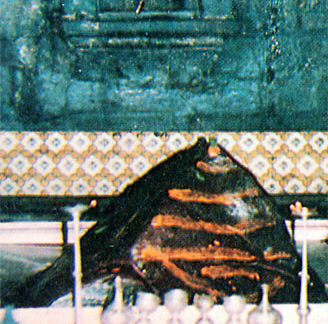
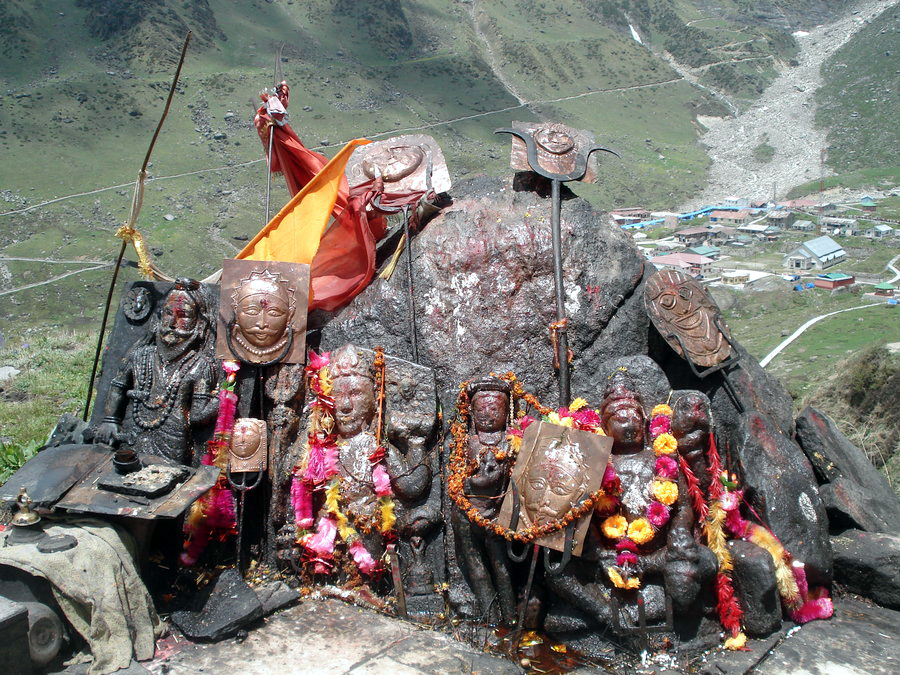
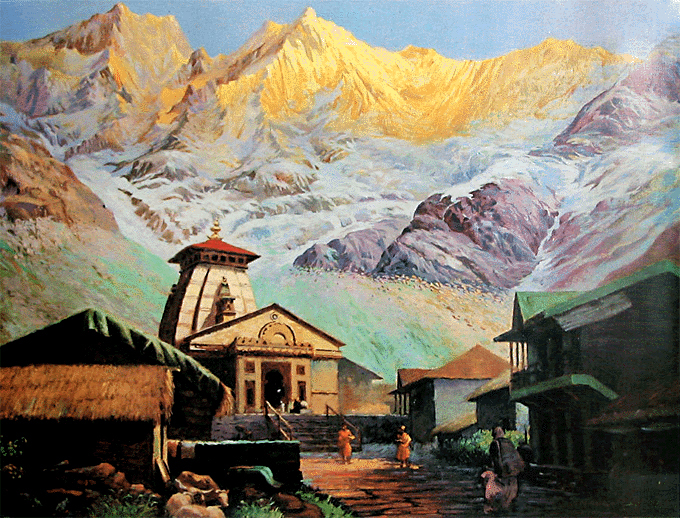
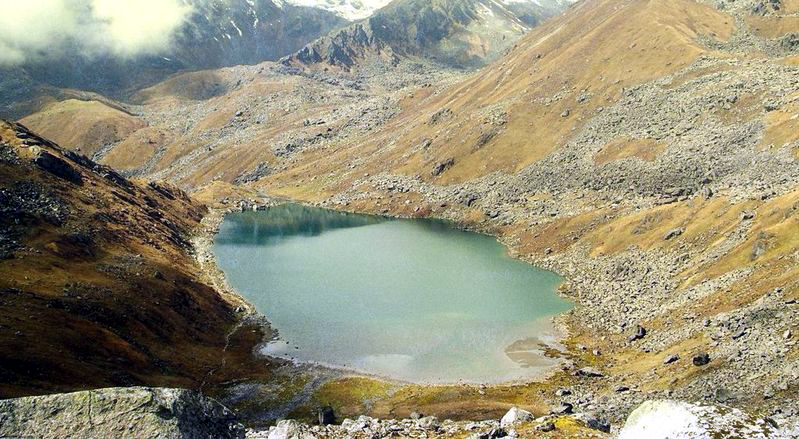

No comments:
Post a Comment